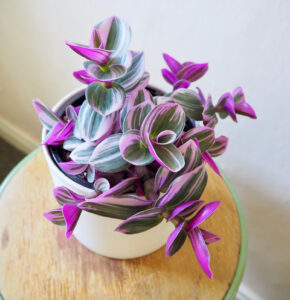Purple Clustered Bellflower (Campanula glomerata), also known as the Clustered Bellflower or the Ball Bellflower, is a beautiful and hardy perennial that produces stunning clusters of bell-shaped purple flowers. Native to Europe and Asia, this plant is commonly used in gardens for its colorful blooms and ability to attract pollinators such as bees and butterflies. While generally easy to grow and maintain, it does require some attention to ensure it thrives in your garden. In this care guide, we’ll cover the following essential aspects of Purple Clustered Bellflower care: planting, soil, water, sunlight, pruning, fertilization, pest control, and winter care.
1. Planting Purple Clustered Bellflower
The first step in growing a healthy Purple Clustered Bellflower is choosing the right planting location. Follow these guidelines to ensure successful planting:
- When to Plant: The best time to plant Purple Clustered Bellflower is in the spring or fall. In the spring, wait until the danger of frost has passed, and in the fall, plant it at least six weeks before the first expected frost to allow the plant to establish itself.
- Planting Depth and Spacing: When planting, ensure the root ball is level with the surface of the soil. Space plants about 12 to 18 inches apart to allow them room to grow. If you’re planting several in a row, consider staggering them to create a natural, flowing look.
- Choosing the Right Container: If you’re planting Purple Clustered Bellflower in containers, ensure the container has good drainage holes to prevent waterlogged roots. Use a well-draining potting mix, and place it in a spot that gets adequate sunlight.
2. Soil Requirements
Purple Clustered Bellflower thrives in well-drained, fertile soil. However, it is relatively adaptable and can tolerate a range of soil types, though it prefers slightly acidic to neutral soil (pH 6.0 to 7.0). Here are a few tips for soil preparation:
- Well-Draining Soil: Bellflowers do not like wet feet, so ensure the soil drains well. You can improve drainage by adding organic matter like compost or aged manure, especially if you have clay-heavy soil.
- Amend the Soil: If your soil is sandy or poor in nutrients, amend it with compost or other organic materials to improve fertility. Adding organic matter will also help with moisture retention and root development.
- Soil pH: Test the pH of your soil before planting. If the soil is too acidic (below 6.0), you can amend it with lime. If it’s too alkaline (above 7.0), adding sulfur can help lower the pH.
3. Watering Purple Clustered Bellflower
Watering is one of the most critical aspects of caring for Purple Clustered Bellflower. While the plant is somewhat drought-tolerant once established, regular watering is essential for optimal growth. Here’s how to properly water:
- Watering Frequency: Purple Clustered Bellflower prefers moderate moisture levels. Water the plant when the top 1-2 inches of soil feel dry. In the hotter summer months, you may need to water more frequently, especially if there has been little rainfall.
- Watering Technique: Water the plant at the base, directly onto the soil, rather than from above. This helps prevent diseases like powdery mildew. Ensure that the water reaches deep into the root zone to encourage deep root growth.
- Avoid Overwatering: While these plants like moisture, they don’t tolerate soggy roots. Make sure the soil drains well and never let the plant sit in standing water.
4. Sunlight Needs
Purple Clustered Bellflower thrives in full sun to partial shade. However, to achieve the best blooms, it’s ideal to plant it in a location that receives at least 6 hours of direct sunlight each day. Here’s a breakdown of sunlight needs:
- Full Sun: In full sun, Purple Clustered Bellflower will grow stronger and produce more abundant flowers. However, if you live in a particularly hot or dry climate, some afternoon shade can help prevent the plant from drying out too quickly.
- Partial Shade: If you have a garden with areas that receive partial shade, Purple Clustered Bellflower can also thrive, though it may produce fewer flowers. In shaded locations, it may also grow taller and lean toward the light source.
- Avoid Deep Shade: Purple Clustered Bellflower should not be planted in deep shade, as it will struggle to bloom and may become leggy and weak.
5. Fertilizing Purple Clustered Bellflower
Fertilizing is important for promoting healthy growth and vibrant flowers, but Purple Clustered Bellflower doesn’t require heavy feeding. Here’s how to fertilize:
- Early Spring Feeding: In early spring, apply a balanced, slow-release fertilizer to support new growth. Look for a fertilizer with an equal ratio of nitrogen, phosphorus, and potassium (e.g., 10-10-10).
- Feeding During the Growing Season: During the growing season, you can apply a light feeding of a low-nitrogen fertilizer to encourage blooming without promoting too much leafy growth. Avoid over-fertilizing, as this can lead to weak growth and fewer flowers.
- Mulch: Applying a layer of organic mulch (such as compost, wood chips, or shredded leaves) around the base of the plant helps retain moisture, suppress weeds, and slowly add nutrients to the soil.
6. Pruning and Deadheading
Regular pruning and deadheading are essential for keeping your Purple Clustered Bellflower plant looking tidy and encouraging continued blooming. Here’s what you need to know:
- Deadheading: Deadheading (removing spent flowers) will encourage the plant to produce more blooms and prevent it from going to seed. Simply pinch off the faded flowers as soon as they start to wilt. This also improves the plant’s overall appearance.
- Pruning for Shape: In early spring, you can cut back any dead or damaged stems to the ground to promote fresh, healthy growth. If the plant becomes too tall or leggy, you can trim it back to encourage a bushier shape.
- Cutting Back After Blooming: After the blooming period is over (usually in late summer), you can cut the plant back by about one-third to tidy up the appearance. This will also help maintain its shape through the winter months.
7. Pest and Disease Control
While Purple Clustered Bellflower is generally resistant to pests and diseases, there are a few issues that gardeners should watch out for:
- Slugs and Snails: These can be a problem, especially in damp or shady conditions. To control slugs and snails, use organic slug bait or set up barriers around your plants, like crushed eggshells or diatomaceous earth.
- Aphids: Aphids may occasionally infest the plant, particularly on new growth. They can be controlled by spraying the plant with insecticidal soap or a mixture of water and dish soap.
- Powdery Mildew: Powdery mildew can sometimes affect Purple Clustered Bellflower, particularly in humid conditions. To prevent this, ensure adequate air circulation around the plant and avoid overhead watering. If mildew appears, remove affected leaves and treat with a fungicide.
8. Winter Care
Purple Clustered Bellflower is hardy in USDA Zones 3 to 8, meaning it can survive in colder climates, but it still benefits from a bit of winter care:
- Mulching: In areas with cold winters, apply a thick layer of mulch around the base of the plant in late fall. This will help insulate the roots and protect them from freezing temperatures.
- Cutting Back: After the first frost, you can cut the plant back to about 2 to 3 inches above the ground to tidy it up. However, some gardeners prefer to leave the seed heads and stems in place until early spring, as they can provide winter interest in the garden.
- Avoid Over-Wintering Moisture: Ensure the soil doesn’t stay too wet during the winter months, as this can cause the roots to rot. If necessary, improve drainage or slightly raise the bed to prevent water from accumulating around the roots.
9. Companion Plants for Purple Clustered Bellflower
Purple Clustered Bellflower pairs well with many other perennials in the garden. Some great companions include:
- Astilbe: Astilbe’s delicate feathery flowers complement the bold, bell-shaped blooms of Purple Clustered Bellflower.
- Daylilies: Daylilies provide contrasting color and texture alongside Bellflowers.
- Coreopsis: Coreopsis flowers offer additional bright colors that pair well with Purple Clustered Bellflower’s purple tones.
Conclusion
With its stunning purple flowers and easy care requirements, Purple Clustered Bellflower is an excellent addition to any garden. By following the guidelines for planting, watering, sunlight, pruning, fertilization, and pest control, you can ensure that this beautiful perennial thrives and blooms year after year. Whether you’re a seasoned gardener or a beginner, growing Purple Clustered Bellflower is a rewarding experience that brings color and joy to your outdoor space.


